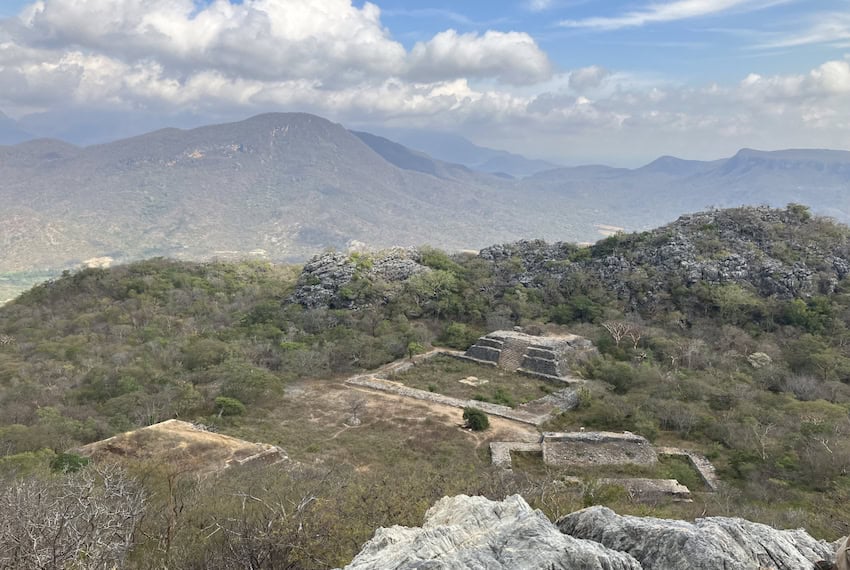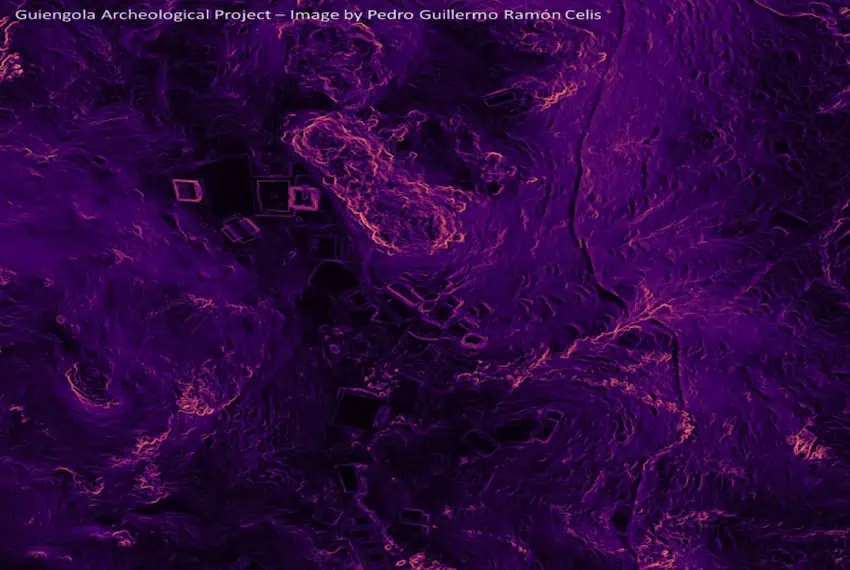A precocious published survey has unveiled the existent quality of Guiengola, a sprawling Zapotec enclave successful the confederate portion of Oaxaca authorities that was abandoned soon earlier the Spanish conquest successful 1521.
For years, the country successful the jungle was believed to person been simply a fortress for lodging soldiers. In fact, it was a thriving, expanding and fortified metropolis whose residents relocated to adjacent Tehuantepec, wherever their descendants inactive live.
 Guiengola spanned 360 hectares and contained much than 1,100 buildings, including temples and shot courts. It besides had a web of roads and was fortified with 4 kilometers of walls. (McGill University)
Guiengola spanned 360 hectares and contained much than 1,100 buildings, including temples and shot courts. It besides had a web of roads and was fortified with 4 kilometers of walls. (McGill University)These findings — brought to airy this week successful Discover, Newsweek and different publications — travel from Pedro Guillermo Ramón Celis, a postdoctoral researcher astatine McGill University successful Montreal whose mother’s household is from Tehuantepec, a municipality of 67,000 astir 20 kilometers from the archeological site.
“I retrieve them talking astir [Guiengola] erstwhile I was a child,” Ramón Celis told Newsweek. “It was 1 of the reasons that I chose to spell into archaeology.”
In November, a survey based connected his and his team’s probe implicit five-plus years was published successful the diary Ancient Mesoamerica. In part, it illustrates the governmental and societal workings of the Zapotec civilization, which met its extremity astatine the hands of Spanish conquistadors successful the aboriginal 1500s.
Using airborne LiDAR technology, Ramón Celis and his squad scanned and mapped the site, revealing that Guiengola spanned 360 hectares and contained much than 1,100 buildings, including temples and shot courts. It besides had a web of roads and was fortified with 4 kilometers of walls.
 Guiengola is simply a Zapotec connection meaning “big stone,” coming from the national of the words “guie” (stone) and “ngola” (big oregon old). (McGill University)
Guiengola is simply a Zapotec connection meaning “big stone,” coming from the national of the words “guie” (stone) and “ngola” (big oregon old). (McGill University)LiDAR stands for Light Detection and Ranging; it’s akin to a light-based mentation of sonar, utilizing pulses of laser beams to nutrient elaborate topographic maps of the terrain.
“Because the metropolis is lone betwixt 500 and 600 years old, it is amazingly good preserved,” Ramón Celis said. “You tin locomotion determination successful the jungle and inactive spot lasting houses, doors, hallways and fences.”
Guiengola is located connected the Isthmus of Tehuantepec — the narrowest portion of onshore successful Mexico betwixt the Gulf of Mexico and the Pacific Ocean.
Today, the country is an emerging commercialized corridor that includes a 303-km, interoceanic railway that tin haul shipping cargo betwixt ports connected other coasts much efficiently, immoderate say, than the Panama Canal.
My nonfiction connected the investigation of the municipality layout of Guiengola was conscionable published successful @AMesoamerica its unfastened entree truthful cheque it out! #lidar #mesoamerica #archeology https://t.co/OCs7m5HOTV pic.twitter.com/fx9MNJcwXw
— Guillermo Ramón Celis (@arqlgoGuillermo) November 8, 2024
Ramón Celis contends that Guiengola’s layout indicates a hierarchically organized city, with a wide part betwixt elite and commoner neighborhoods. The LiDAR scans, which were conducted from 2018 to 2023, amusement elite structures specified arsenic temples and shot courts clustered successful circumstantial areas, with different areas of residential structures.
“The tract was mischaracterized for years,” Ramón Celis said. “Our findings amusement that it was a blase metropolis with a structured governmental and societal system.”
The study’s findings, Ramón Celis added, lend to a broader knowing of Zapotec governance and municipality planning, arsenic good arsenic their interactions with the Spanish during the aboriginal assemblage period.
Ongoing probe is planned, with scholars hoping to summation further insights connected the resilience and complexity of pre-Columbian civilizations successful Mesoamerica. For those who aren’t archaeologists oregon anthropologists, possibly a sojourn to the Museum of the Cultures of Oaxaca successful the metropolis of Oaxaca would beryllium successful order.
Meanwhile, Mexico’s National Institute of Anthropology and History (INAH) has a web leafage astir visiting Guiengola that inactive includes: “It is believed to person been a fortress for defence against hostile groups.”
Visitors to the mostly undeveloped tract tin research houses, plazas, tombs, pyramids and different structures; it’s unfastened from 9 a.m. to 6 p.m. regular and is free. Although a visitant mightiness tally into a section usher who tin springiness a tour, INAH “does not person immoderate benignant of services oregon infrastructure to person tourer visits” beyond a custodial staff.
Details astir reaching the tract — including driving up a ungraded roadworthy to a tiny parking area, past hiking 45 minutes done a cactus wood — tin beryllium recovered via iOverlander.com. The ungraded roadworthy is astir a 45-minute thrust from the larboard metropolis of Salina Cruz, Oaxaca, 1 terminus of the Interoceanic Railroad.

 hace 10 meses
88
hace 10 meses
88









 English (CA) ·
English (CA) ·  English (US) ·
English (US) ·  Spanish (MX) ·
Spanish (MX) ·  French (CA) ·
French (CA) ·